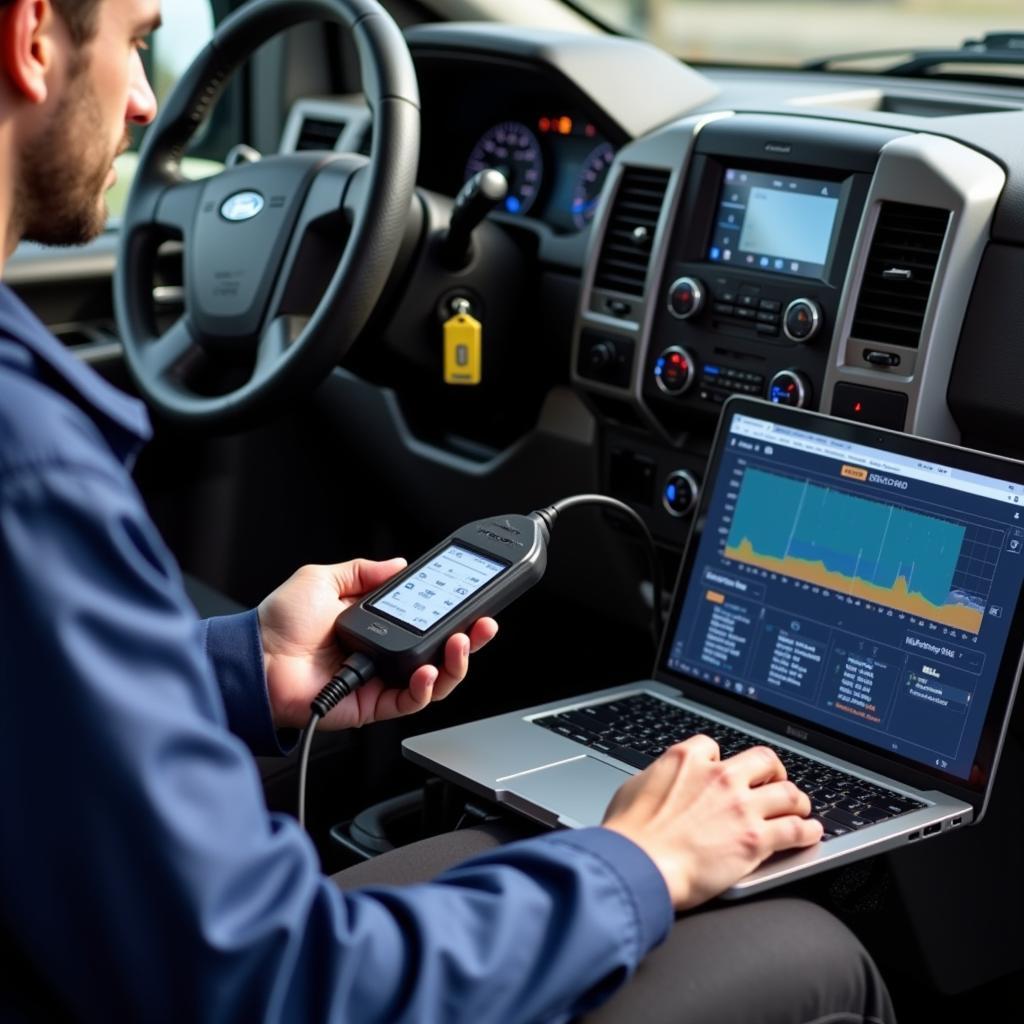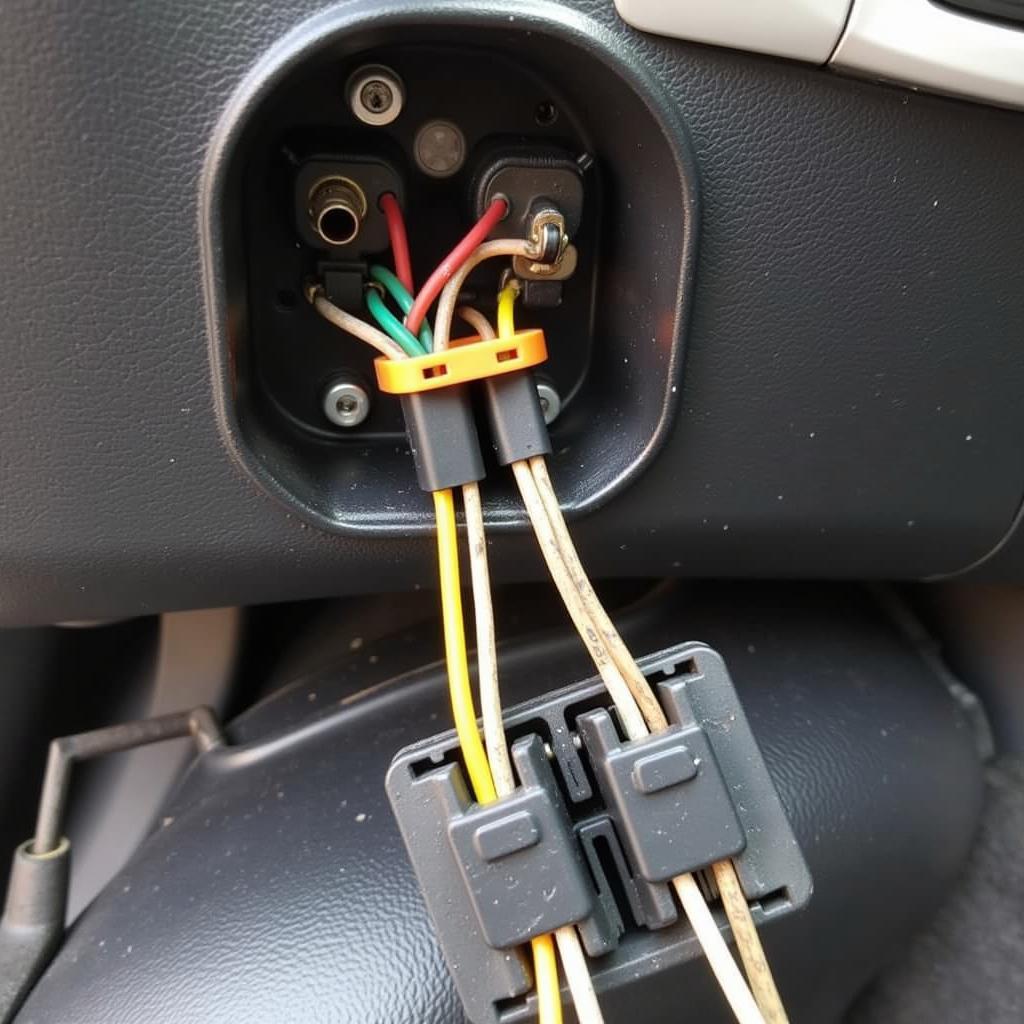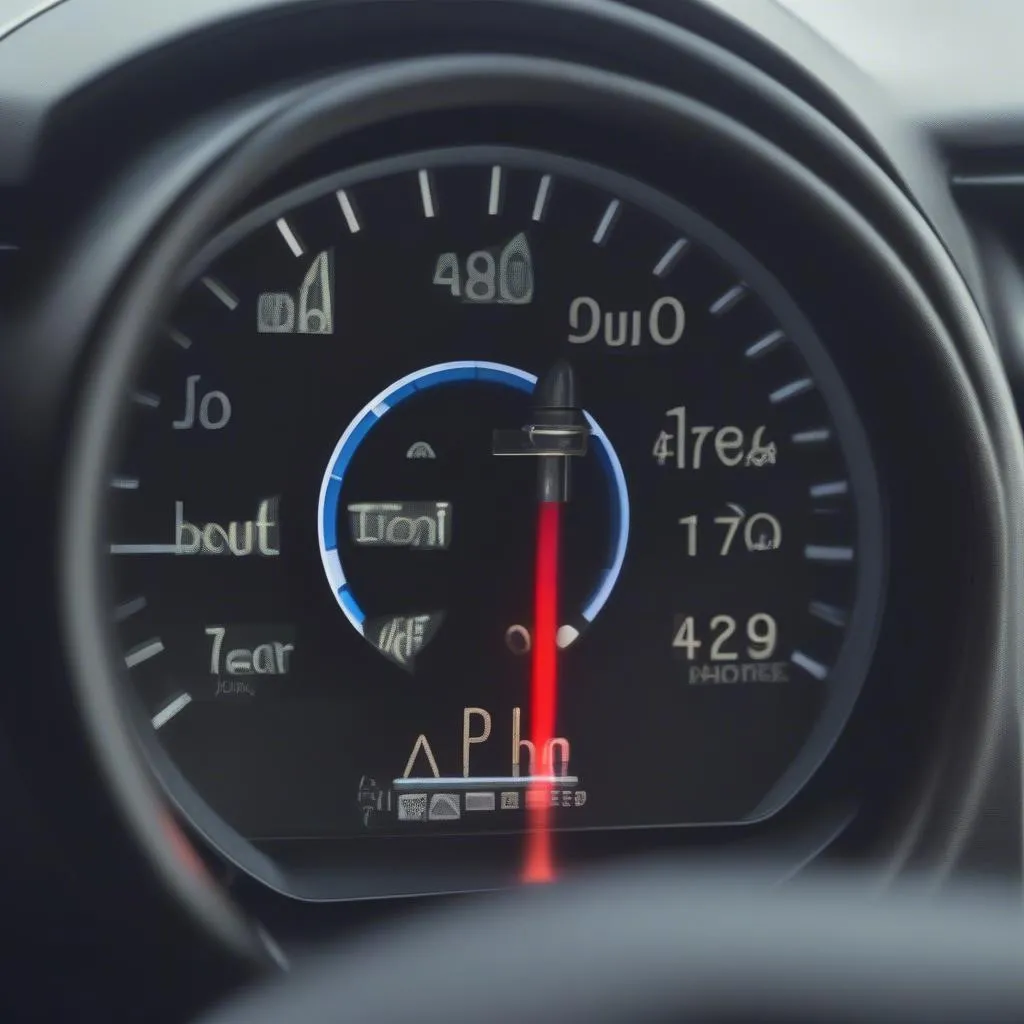If you’re driving your 2005 Ford E150 and the brake warning light starts flashing intermittently, it’s crucial not to ignore it. This signal is your van’s way of telling you something is wrong with the braking system, which could potentially lead to dangerous situations on the road. While a flashing brake light can be alarming, understanding the potential causes and solutions can empower you to address the issue effectively.
A flashing brake warning light in your 2005 Ford E150 can stem from various issues, ranging from a simple fix like low brake fluid to more complex problems within the ABS system.
Common Reasons Why Your 2005 Ford E150 Brake Light is Flashing
Here’s a breakdown of the most common culprits behind a flashing brake warning light in a 2005 Ford E150:
1. Low Brake Fluid Level
The most common reason for a flashing brake light is low brake fluid. Brake fluid is essential for transmitting the force you apply to the brake pedal to the wheels, allowing the vehicle to stop.
What to do:
- Check the brake fluid level. Park your van on a level surface and locate the brake fluid reservoir under the hood. The reservoir will have a “Minimum” and “Maximum” marking.
- Add brake fluid if needed. If the fluid level is below the “Minimum” mark, carefully add the correct DOT 3 or DOT 4 brake fluid, as recommended in your owner’s manual, up to the “Maximum” line. Avoid overfilling.
- Inspect for leaks. If you find yourself adding brake fluid frequently, there might be a leak in the system. Carefully examine the brake lines, hoses, and connections around the master cylinder and each wheel for any signs of wetness or fluid drips.
 Checking Brake Fluid Level in a Ford E150
Checking Brake Fluid Level in a Ford E150
2. Worn Brake Pads
Brake pads are designed to wear down over time. When they become too thin, the wear indicator, a small metal tab, comes into contact with the brake rotor, creating a high-pitched squealing sound and triggering the brake warning light to flash.
What to do:
If you suspect your brake pads are worn, it’s best to have them inspected by a qualified mechanic as soon as possible. Driving with worn brake pads can severely compromise your braking performance and lead to costly damage to the rotors.
 Worn Brake Pads on a Ford E150
Worn Brake Pads on a Ford E150
3. ABS Issue
The Anti-lock Braking System (ABS) plays a vital role in preventing wheel lockup during hard braking, ensuring steering control and stability. If the ABS module detects a malfunction, it might trigger the brake warning light to flash.
What to do:
Diagnosing ABS issues can be complex and often requires specialized diagnostic equipment. It’s recommended to take your E150 to a qualified mechanic specializing in automotive electrical systems to pinpoint the exact cause of the problem and perform the necessary repairs.
4. Faulty Brake Light Switch
Although less common, a faulty brake light switch can also cause the brake warning light to malfunction. The switch, usually located above the brake pedal arm, signals the brake lights to illuminate when you press the pedal. A malfunctioning switch might send incorrect signals to the vehicle’s computer, triggering the warning light.
What to do:
If the brake lights are not illuminating when you press the pedal, the brake light switch might be the culprit. Have it inspected and replaced by a qualified mechanic if necessary.
Remote Diagnostics and Software Solutions for Your 2005 Ford E150
In today’s technologically advanced world, remote diagnostics and software solutions have become increasingly prevalent in the automotive industry. These advancements can offer convenient and efficient ways to diagnose and resolve specific issues with your 2005 Ford E150, including those related to the braking system.
How it works:
Remote diagnostics utilize a specialized device that plugs into your vehicle’s OBD-II port, usually located under the dashboard on the driver’s side. This device communicates with a remote technician’s computer, allowing them to access your van’s onboard computer, read diagnostic trouble codes, monitor live data streams, and even perform software updates or reprogramming if necessary.
Benefits of Remote Diagnostics:
- Convenience: No need to physically take your vehicle to a repair shop, saving you time and effort.
- Faster Diagnosis: Remote technicians can quickly identify the root cause of the issue through direct access to your vehicle’s data.
- Cost-effective: Remote diagnostics can often be more affordable than traditional in-person diagnostics.
- Software Updates and Reprogramming: Remote technicians can install software updates, address module communication errors, or perform reprogramming procedures, potentially resolving complex electronic issues.
 Remote Diagnostics for Ford Vehicles
Remote Diagnostics for Ford Vehicles
Expert Insight:
“Remote diagnostics have revolutionized the way we approach vehicle diagnostics and repair. For issues like intermittent brake warning lights, remote diagnostics can be invaluable in pinpointing the source of the problem, whether it’s a sensor malfunction, wiring issue, or software glitch. This allows for more targeted and efficient repairs, saving vehicle owners time and money.” – John Miller, Senior Automotive Electrician
Conclusion
A flashing brake warning light in your 2005 Ford E150 should never be ignored. By understanding the potential causes outlined in this guide and considering the advantages of remote diagnostics and software solutions, you can take the necessary steps to address the issue safely and efficiently.
Remember, maintaining your van’s braking system is paramount for your safety and the safety of others on the road.
Frequently Asked Questions
1. Can I drive my 2005 Ford E150 with the brake warning light flashing?
It’s highly discouraged to drive with a flashing brake warning light. It indicates a potential problem with your braking system that could compromise your safety.
2. How often should I check my brake fluid level?
It’s a good practice to check your brake fluid level at least once a month and before any long trips.
3. How long do brake pads typically last?
Brake pad lifespan varies depending on driving habits, road conditions, and pad quality. On average, they can last anywhere between 25,000 to 70,000 miles.
4. Is it safe to add brake fluid myself?
Yes, you can add brake fluid yourself, but ensure you use the correct type specified in your owner’s manual and avoid overfilling. If you’re uncomfortable doing this, it’s best to consult a mechanic.
5. Can a bad battery cause the brake warning light to flash?
While unlikely, a weak or failing battery can sometimes cause erratic electrical behavior, potentially affecting the brake warning light.


